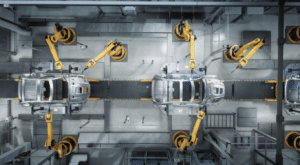The construction industry has been grappling with supply chain issues since 2020, and according to industry sources, these challenges are unfortunately expected to continue into the future. This article will explore the current state of the construction industry’s supply chain, the factors driving material price increases, and the potential impacts of these trends on construction companies.
The main drivers of this trend of shortages and price hikes ahead are rising transportation costs, rising material and production costs, raw materials shortages, storms and natural disasters causing disruptions and increased demand from other industries. As a result of these trends, the following supplies are being effected.
Drywall prices are projected to continue to increase. With high material costs and a high demand, at this current time it is impossible for the price of drywall to be lowered. However, the demand for this product seems to be easing so this will hopefully contain any more radical price increases.
Prices for cement and concrete are also expected to continue to rise. Constant problems continue to pop up in this industry. Issues such as higher production costs and environmental disasters have a high impact on prices. For example, the barges on the Mississippi River are currently unable to move due to low water levels, which limits their ability for heavy construction materials like cement.
In some slightly more positive news the prices for steel and lumber are expected to decline. This is excellent news for construction companies, as steel and lumber make up a large portion of construction costs. Part of the reason for this price decline is a weakening demand and oversupply from mills and a housing development slowdown.
Prices for insulation materials are forecasted to level off. Transportation issues and the effects of 2021’s winter storm Uri disrupted the supply chain of one of the key raw materials found in insulation which led to a shortage of the product and thus a price increase, however, for now the price seems to be leveling off.
The final challenge facing construction companies is increasing demand from other industries. The post-pandemic economic recovery is causing a surge in demand for housing and infrastructure projects. This increased demand is putting even more strain on an already constrained supply chain. As a result, many construction firms are reporting long lead times and difficulty securing contracts.
Rob Cantando, national director of strategic supply chain at Skanska, a Sweden-based contractor said, “That’s really the big issue, we see the market going into different directions in terms of materials. Some are starting to recover and you’ve got other ones that aren’t going to recover for a long time and probably get even more challenging over the next year or two.” Hopefully more supply industries will continue to recover after the devastating effects of the pandemic. This recovery would alleviate some of the pressure construction companies and workers are facing due to longer wait times and uncertainty in obtaining much needed building essentials.

Photo Credit: Pexels.com – Scott Webb; Pixabay.com – Janno Nivergall




